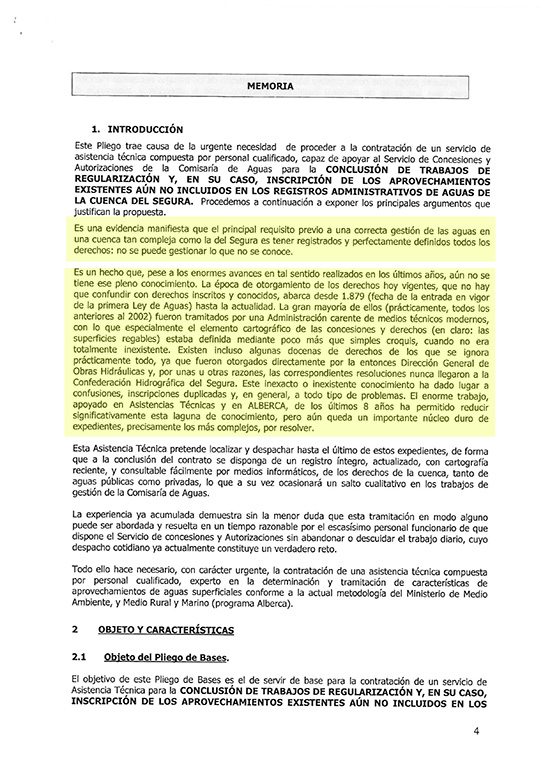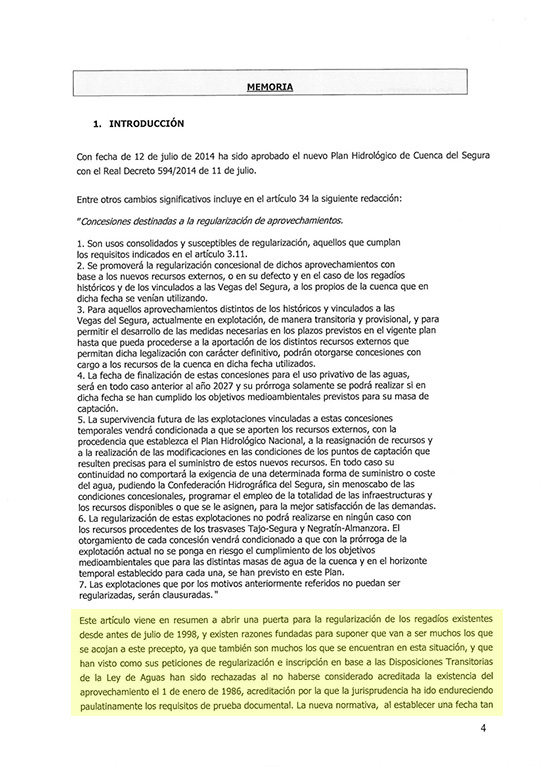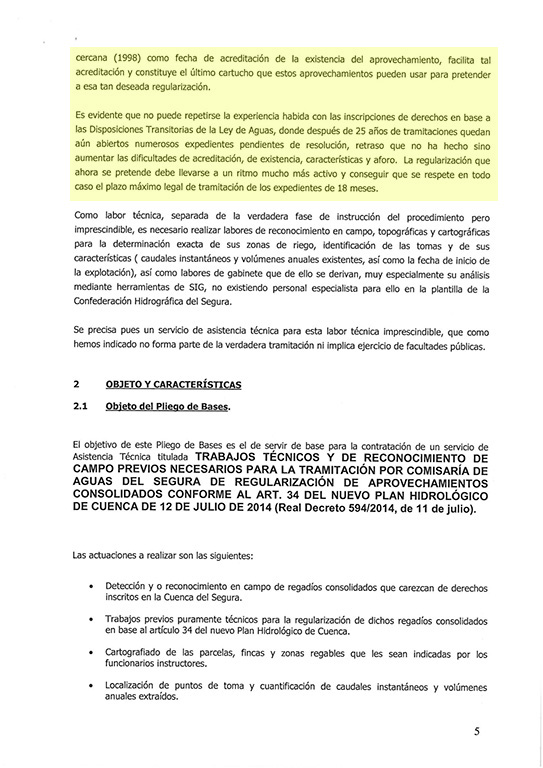Entrepeñas reservoir (Guadalajara province) July 5th, 2017 / Ignacio
López/JCCM
The soil in south-eastern Spain is tremendously fertile. It profits from every drop of water
like no other soil in the country. But there's little water. Very little. The inhabitants of the Campo de
Cartagena have spent more than a century looking for it literally under stones, first with their lateen sail
mills and then, taking advantage of extraction machinery used in the nearby mining sites of the Sierra Minera,
deeper and deeper. The result was so good that, when engineer Manuel Lorenzo Pardo visited the
region, commissioned by Indalecio Prieto to draw up the National Plan for Hydraulic Works during the
Second Republic (1933), he stated, upon returning to Madrid, that the Nile river would have to be taken
there if necessary.
In a pragmatic rush, they opted for the Tagus. The Civil War and the black years of autarchy cut the plans
short, so that the works on the Tagus-Segura Transfer (TTS) were not resumed until 1965, and the
transfer only opened in 1979, forty years ago.
From a civil engineering point of view, figures were dazzling. A 292-kilometre canal with a flow rate of up
to 33 cubic meters per second. At its starting point, at the Bolarque reservoir, water is pumped to bridge the
245-meter difference in height, along a 1,070 meter span.
However, the really relevant figures, those of the water that was supposed to be sent from one basin to
another, were not only not fulfilled.
The first phase of the Transfer
involved "an annual maximum of 600 million cubic metres" that would be diverted from the Tagus River to the
Segura. Of these, 400 were for irrigation, 110 for urban consumption and the rest, estimated evaporation.
The 400 million cubic meters of water for irrigation are distributed among the provinces of
Murcia, Alicante and Almeria. Murcia was allocated the greatest annual amount: 260 million cubic meters. And
within Murcia, the Association of Irrigators to which the largest volume was allocated was that of the
Campo de Cartagena, with 122 hm³ per year. The second phase was never approved.
Total net consumption of the Tagus-Segura transfer, destined for irrigation per
hydrological year. (*) Data up to July 2019, in hm³. | Source: Confederación Hidrográfica del Segura
The average amount of water transferred from the Tagus to the Segura since 1980 has been
less than half the maximum foreseen. According to CHS figures, average irrigation resources from the
transfer during the hydrological series 1980/81 - 2017/18 are quantified at 175 hm³/year (at destination
point). That’s the medium of the long series. In recent years, when drought has returned, the
transferred volume has been much lower.
Irrigation spread throughout
the Segura basin and with it through the Campo de Cartagena as if the water from the Transfer had arrived in
the expected quantity year after year.
As if there had not been intermittent but long drought periods that drastically reduced the volume
transferred.
It wasn't very difficult to know where water for irrigation was drawn from. There is a hidden, parallel world
to this transfer. There is another side of the story.
There is a gigantic root under the ground, from which most of the Campo de Cartagena actually drinks
(up to 80% of the water in dry seasons), formed by wells, pipes and desalination plants. It has caused a
natural disaster.
This situation has damaged the lagoon and has overexploited and polluted aquifers with nitrates from the
fertilizers applied on intensively irrigated fields. A world beneath the furrows of iceberg lettuces, melons
and lemon trees, a world that has furthermore a direct connection with the Mar Menor.
"When water from the transfer has been available, groundwater has covered 30 to 35 percent
of the demand. But when no water from the transfer came, it was groundwater that covered up to 80 percent.
(...) Groundwater is the key to the fact that it has at all been possible to maintain the system".
José Luis García Aróstegui, head scientist at IGME Murcia.

 Turn it for a better view
Turn it for a better view




